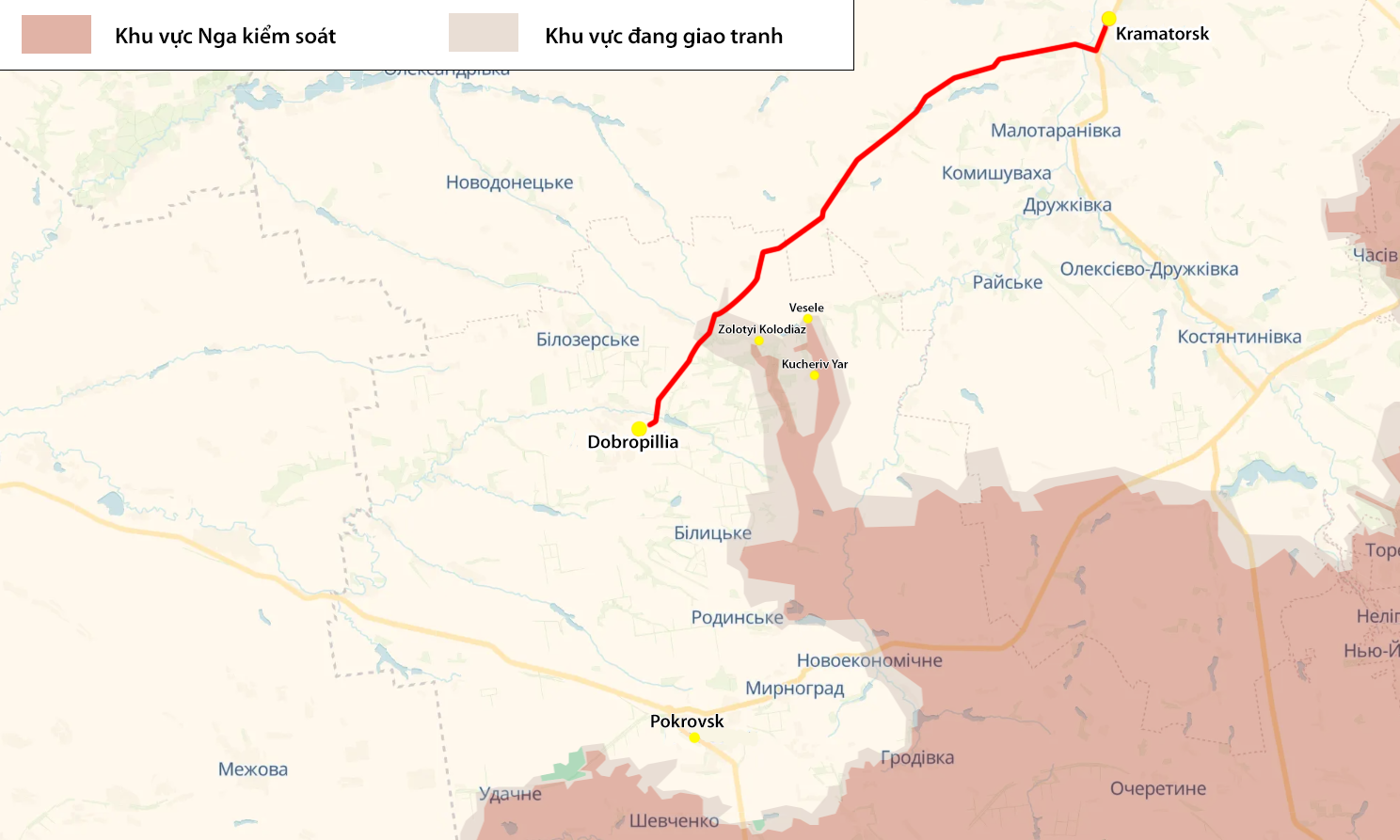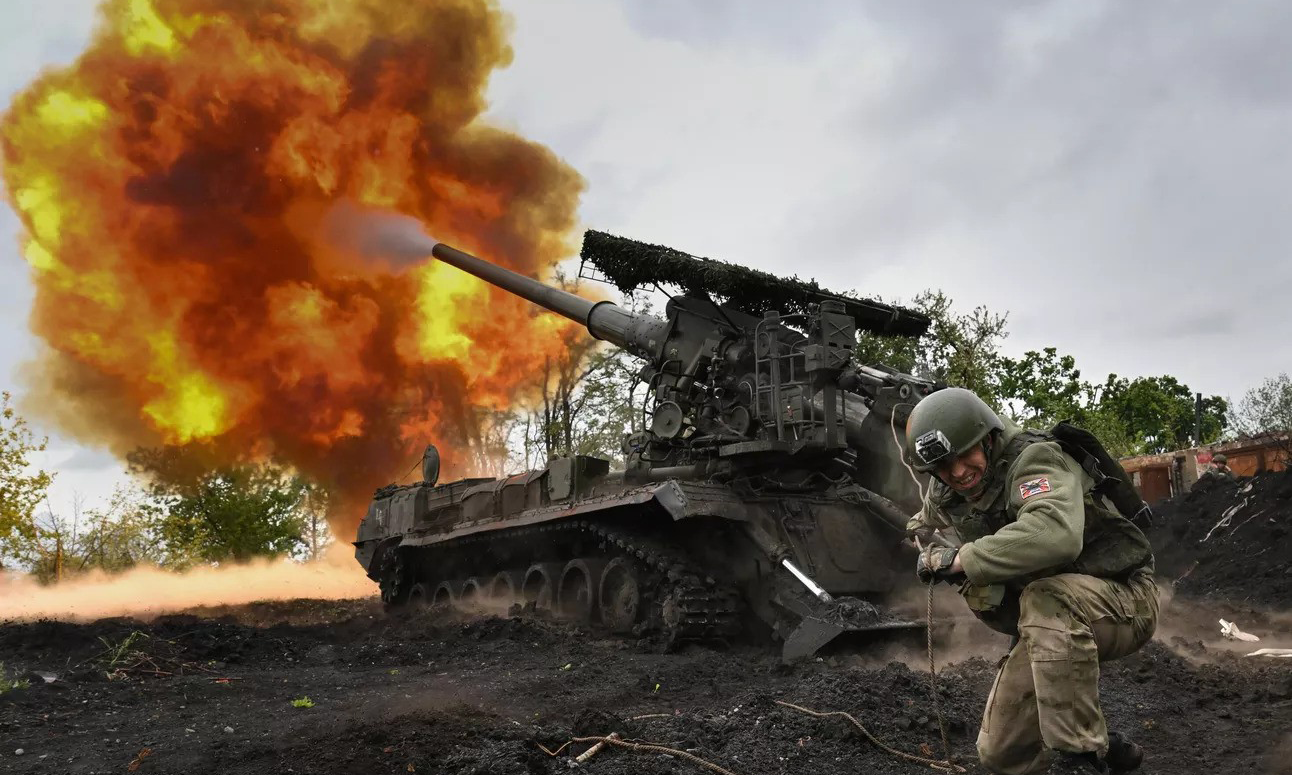DeepState, a Ukrainian analysis group with ties to the Ministry of Defense, released a map on 11/8 indicating that Russian forces have broken through Ukrainian lines north of the stronghold of Pokrovsk in Donetsk province, advancing into the settlements of Kucheriv Yar, Zolotyi Kolodiaz, and Vesele.
Russian forces are reportedly consolidating their positions to gain full control of these areas in preparation for a new offensive.
The gray zone, an area of ongoing fighting where neither side has complete control, has reached the Dobropillia-Kramatorsk highway. This is a vital Ukrainian supply route, actively used until at least mid-July. Russian forces appear to be trying to establish a foothold west of the highway to completely sever this supply line.
 |
Location of the Dobropillia-Kramatorsk highway (red). Graphic: DeepState |
DeepState reports that Ukraine has built new fortifications around Zolotyi Kolodiaz and nearby settlements, but Russian forces are bypassing these defenses rather than assaulting them directly. They express concern that Russian units might return to capture these fortifications for use as defensive lines in the future.
"After consolidating their positions and accumulating forces, the Russian army will certainly advance deeper, bringing drone operation teams. This will create difficulties for Ukraine in establishing alternative supply routes and maintaining defensive positions in the surrounding area," DeepState stated.
The Ukrainian analysis group warns that Dobropillia, about 22 km north of Pokrovsk, could fall quickly if the situation continues to develop along these lines.
The Ukrainian General Staff reported on the same day that Russian forces are leveraging their numerical advantage, deploying infantry detachments to attempt breakthroughs, despite "heavy losses". "The Commander-in-Chief has decided to deploy additional resources to detect and stop sabotage groups infiltrating the lines," the General Staff stated.
The Russian Ministry of Defense has not commented on the information.
 |
Russian 2S7M self-propelled guns firing towards Ukrainian positions in May. Photo: RIA Novosti |
Russian advances over the past three months have formed a pincer movement around the Pokrovsk-Mirnograd front. This could put Ukrainian units at risk of being encircled in a "cauldron," a term often used by Russia to describe large encirclements on the battlefield, where they use overwhelming force to surround an area on multiple sides, leaving only one escape route.
This tactic has been used successfully in previous operations to break through fortified strongholds in Donetsk. A distinguishing feature of the Pokrovsk operation is the use of deep penetration special forces, creating dual pressure on Ukrainian defenders.
Experts and Ukrainian soldiers assess the current situation in Pokrovsk as similar to Avdeevka and Ugledar, strategic strongholds that Ukrainian forces had to abandon after Russia established pincer movements and created cauldrons. Ukrainian units tried to hold onto those two cities for as long as possible, resulting in difficult withdrawals under heavy Russian fire and significant casualties.
Ivan Stupak, a Ukrainian military expert, believes that the Ukrainian army is likely to have to leave Pokrovsk within the next 60 days.
Pham Giang (via Kyiv Independent)












